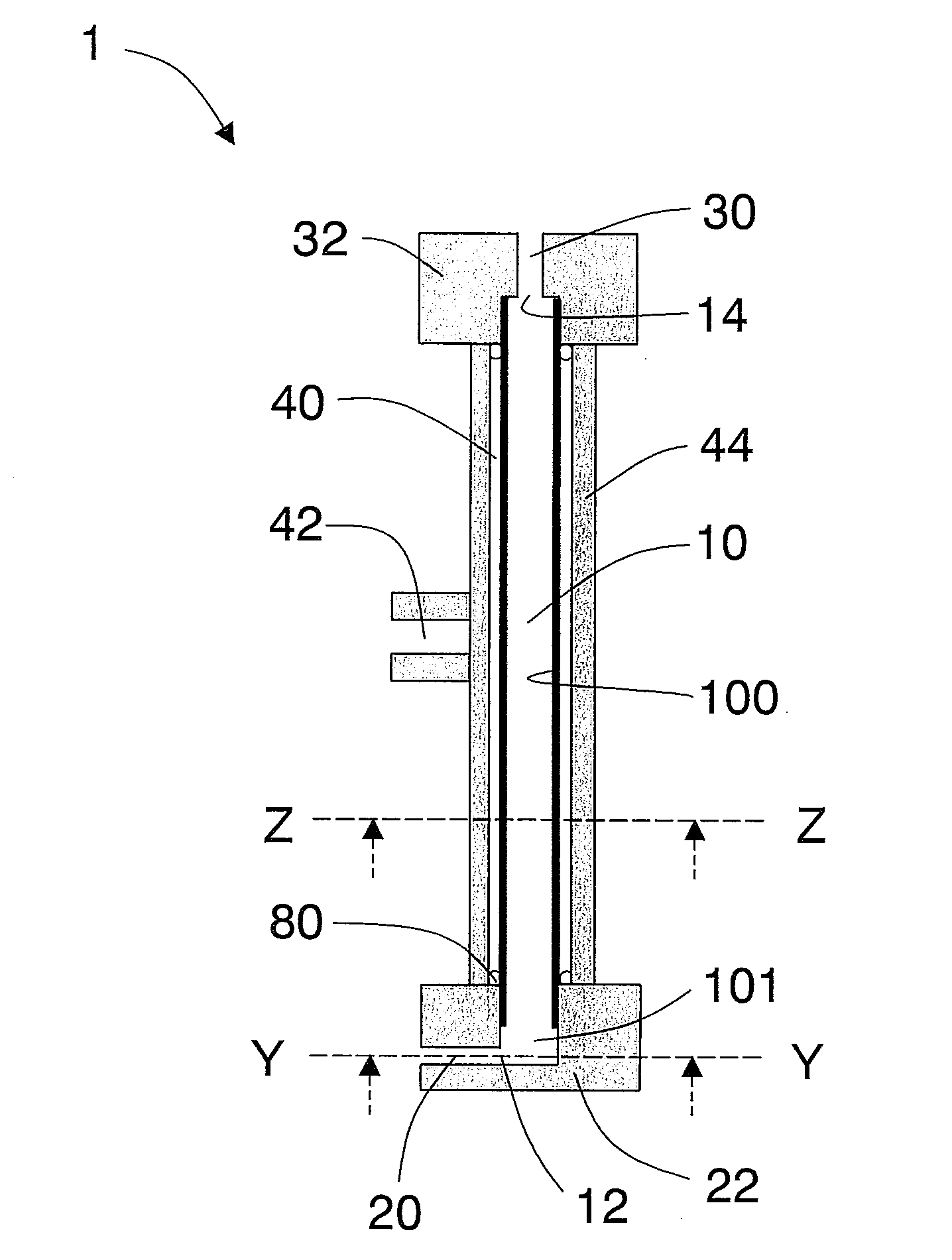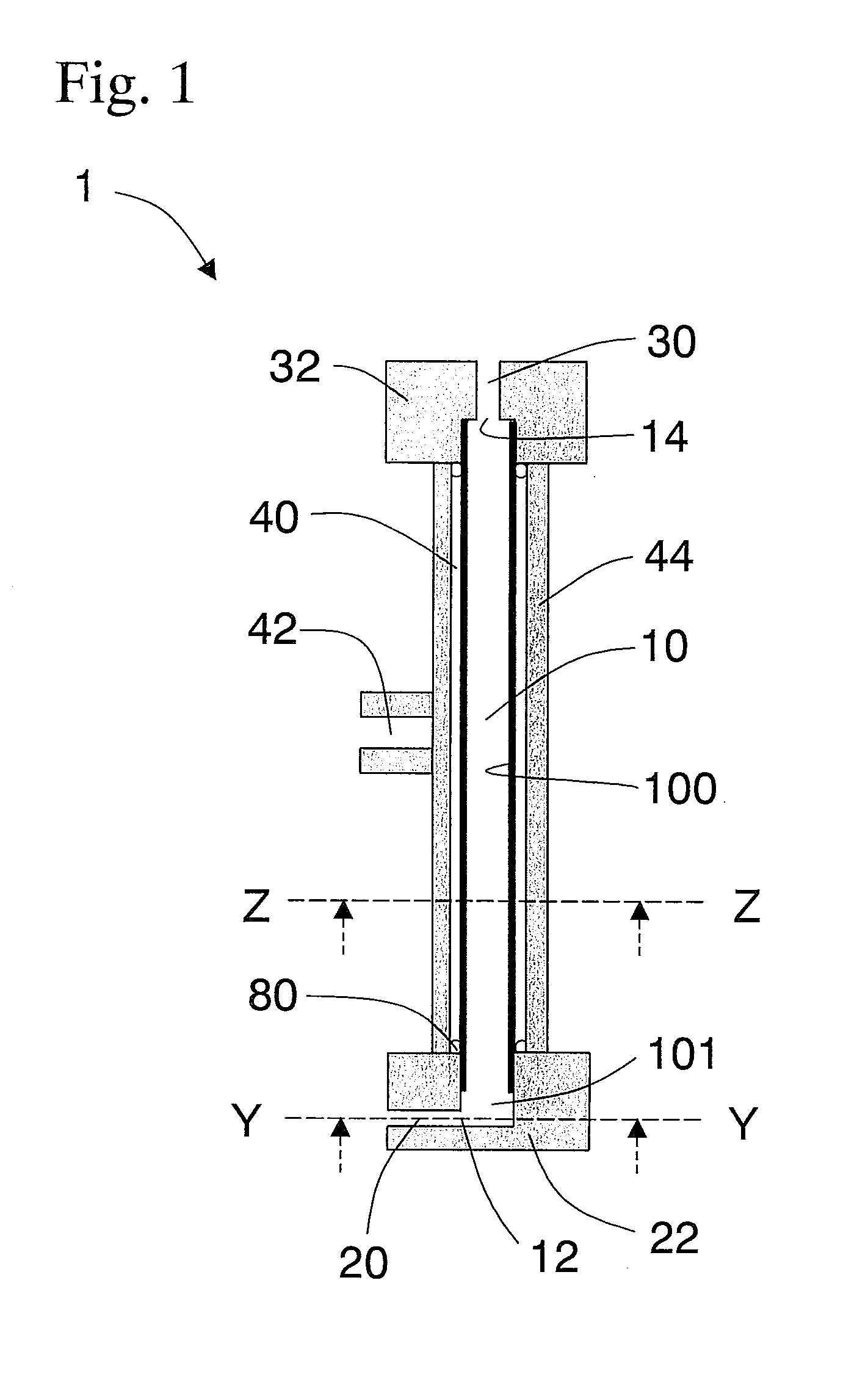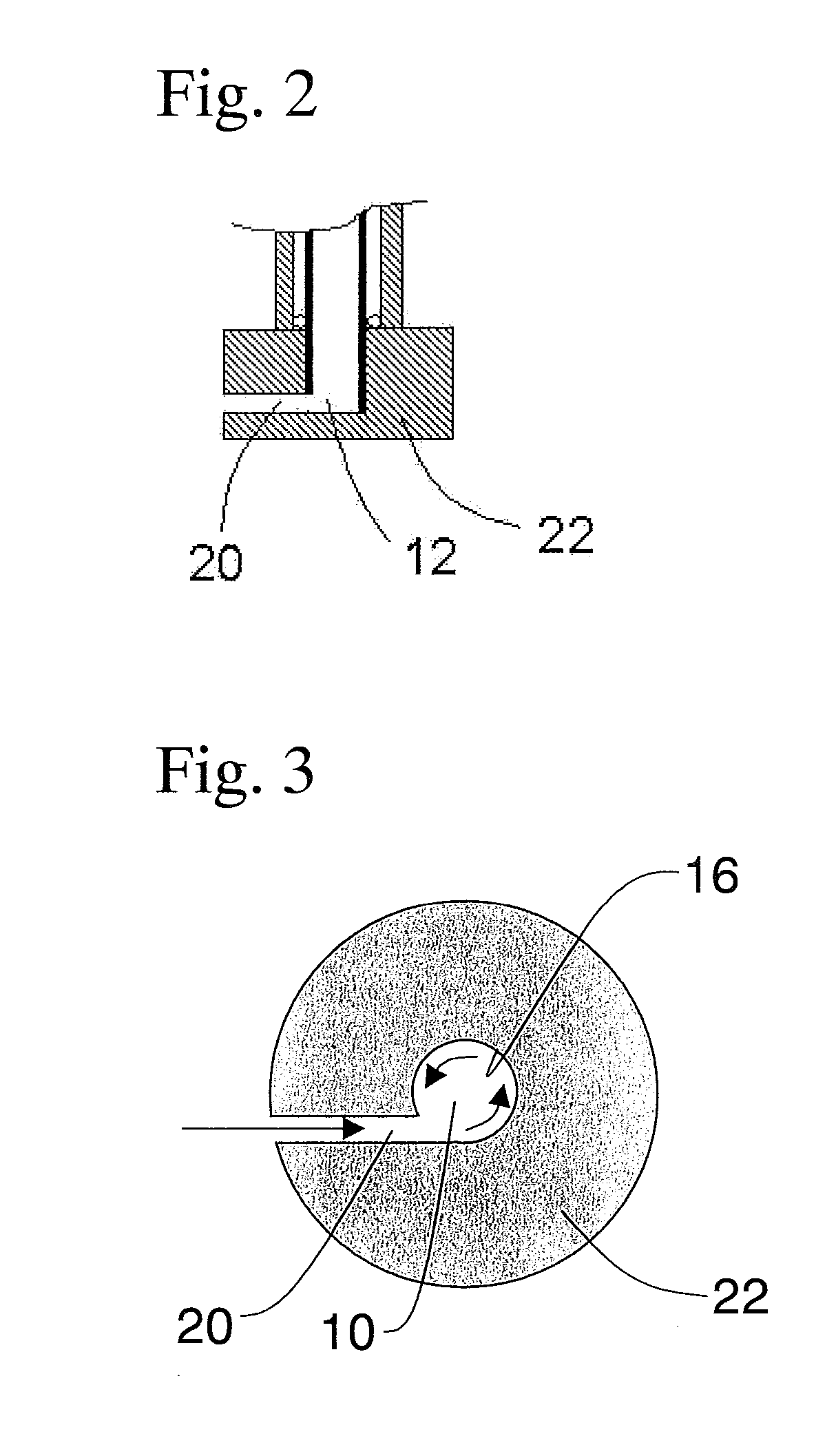Method of producing composition having continuous phase and disperse phase dispersed finely in the continuous phase and apparatus for producing the compositon
a technology of disperse phase and composition, which is applied in the direction of biocide, animal repellents, other chemical processes, etc., can solve the problems of difficult to meet the demand of conventional emulsion production technology, difficult to control particle size accurately in conventional production methods, and low polydispersity of disperse phase particles, etc., to achieve high production efficiency and low cost
- Summary
- Abstract
- Description
- Claims
- Application Information
AI Technical Summary
Benefits of technology
Problems solved by technology
Method used
Image
Examples
example 1
[0105]The cylindrical body prepared had the circumferential surface entirely formed by a Sirasu porous glass membrane (SPG membrane) having an average pore size of 5.2 μm and the cylindrical body was 10 mm in outer diameter, 9 mm in inner diameter, and 150 mm long (SPG Technology Co., Ltd.; SPG membrane; Lot No.: PJN08J14). Also prepared was a stainless steel cylindrical member 22 which was thicker than the cylindrical body using the SPG membrane, had the same inner diameter as that of the cylindrical body, and was closed at one end. As illustrated by FIG. 1, the member 22 was placed so that it capped the end of the cylindrical body using the SPG membrane to form a 5 mm-long cylindrical space the circumferential surface of which was formed by stainless steel at the end of the cylindrical body using the SPG membrane. A 155 mm-long cylindrical body 10 which had a porous portion 100 and a non-porous portion 101 was thus prepared. In the member 22, a through hole was created which was v...
example 2
[0109]The same procedure as in Example 1 was repeated to produce an emulsion and analyze it, except that the output of the pump was adjusted to set the flow linear velocity at 3.2 m / s. The distribution result of the relative particle mass is shown in FIG. 6. According to the result, the span was 0.64 and the average particle size was 21.3 μm.
example 3
[0110]The same procedure as in Example 1 was repeated to produce an emulsion and analyze it, except that the flow linear velocity was 6.4 m / s. The distribution result of the relative particle mass is shown in FIG. 6. According to the result, the span (polydispersity) was 1.21 and the average particle size was 16.2 μm.
[0111]According to the results obtained in Examples 1 to 3, when the flow linear velocity was 3.2 m / s, the span was the lowest. FIG. 7 shows the relation between the particle number and the particle size (the distribution of the relative particle number) for confirmation of the presence or absence of fine liquid particles (satellite liquid particles) generated in Examples 1 to 3. According to FIG. 7, the generation of fine liquid particles was not observed at the flow linear velocity of 3.2 m / s, whereas the generation of lots of fine liquid particles was demonstrated at the other linear velocities. This is consistent with the lowest polydispersity of the emulsion obtain...
PUM
| Property | Measurement | Unit |
|---|---|---|
| Fraction | aaaaa | aaaaa |
| Fraction | aaaaa | aaaaa |
| Fraction | aaaaa | aaaaa |
Abstract
Description
Claims
Application Information
 Login to View More
Login to View More - R&D
- Intellectual Property
- Life Sciences
- Materials
- Tech Scout
- Unparalleled Data Quality
- Higher Quality Content
- 60% Fewer Hallucinations
Browse by: Latest US Patents, China's latest patents, Technical Efficacy Thesaurus, Application Domain, Technology Topic, Popular Technical Reports.
© 2025 PatSnap. All rights reserved.Legal|Privacy policy|Modern Slavery Act Transparency Statement|Sitemap|About US| Contact US: help@patsnap.com



